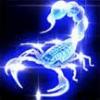Anyways, I enter this command at startup:
imdisk -a -f C:\DOS\BOOT\VOLUME\NETDRV0.IMG -v 1 -P -m G:
imdisk -a -f C:\DOS\BOOT\VOLUME\NETDRV1.IMG -v 1 -P -m H:
And now that I hidden the directory C:\DOS\BOOT\VOLUME, I can access the virtual drives G: and H: at startup! 
The drives that I mounted at startup can be found in \HEY_LOCAL_MACHINE\SYSTEM\CurrentControlSet\Service\ImDisk\Paramenters
In the registry key, it tells what drive letters (DriveLetterX) have been mounted and the hard disk image (filenameX) that gets mounted at startup. The registry also tells how many devices have been loaded (LoadDevices) and the image offset in bytes (ImageOffset). An image offset of 32,256 bytes (31.5 KB) translate to a image offset of 63 sectors and lastly the size of the drive in bytes. Since it's a FAT16 formatted hard disk image, each of the drives have 2,146,927,104 bytes (1.9995 GB) of disk space. CHKDSK reports the drive having 65,510 total clusters at 32 KB per cluster
I'm gonna try to mount the hard disk images again and as a folder mounting point to see if this procedure works as well.
Edit:It worked! I used this command to mount the hard disk images as a folder mounting point
imdisk -a -f C:\DOS\BOOT\VOLUME\NETDRV0.IMG -v 1 -P -m C:\DOS\NETWORK\DRIVE.0
imdisk -a -f C:\DOS\BOOT\VOLUME\NETDRV1.IMG -v 1 -P -m C:\DOS\NETWORK\DRIVE.1
If I want to stop mounting the hard disk images at startup, I would just delete the registry keys inside \HEY_LOCAL_MACHINE\SYSTEM\CurrentControlSet\Service\ImDisk\Paramenters
If Olaf is seeing this, there needs to be a much easier way to mount hard disk images as a virtual drive or virtual folder mount point at startup! 
Edited by ppgrainbow, 25 August 2016 - 11:46 PM.


















